Genus ClerodendrumL. Rank Species | ||
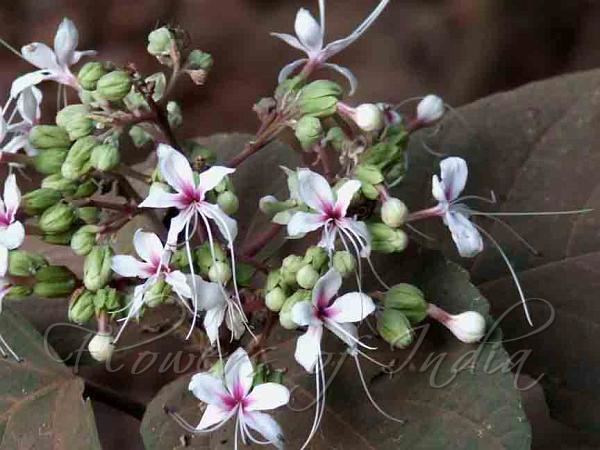 | ||
Similar Clerodendrum, Clerodendrum paniculatum, Clerodendrum colebrookianum, Clerodendrum phlomidis, Volkameria | ||
Clerodendrum viscosum vent clerodendrum infortunatum volkameria infortunata roxb
The Hill glory bower, (Clerodendrum infortunatum), is a perennial shrub belonging to the family Lamiaceae, also sometimes classified under Verbenaceae. It is the type species among ~400 species of Clerodendrum. It is one of the most well-known natural health remedies in traditional practices and siddha medicine.
Contents
- Clerodendrum viscosum vent clerodendrum infortunatum volkameria infortunata roxb
- Description
- Chemical constituents
- Ayurvedic and Siddha medicines
- Traditional practices
- References
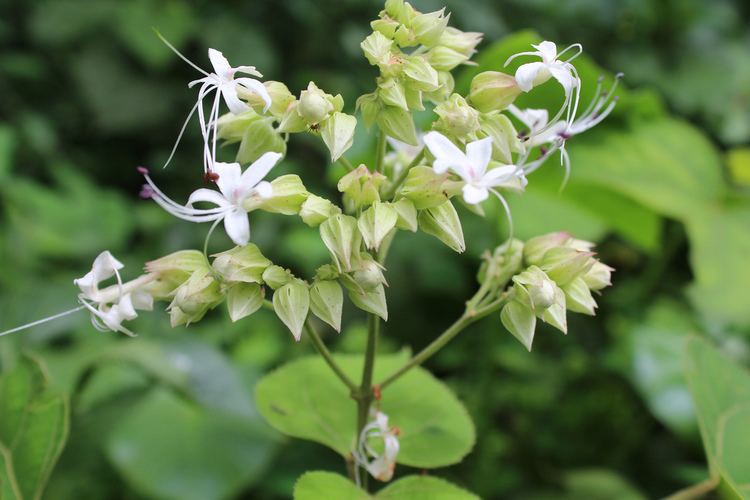
The species is native to tropical regions of Asia including Bangladesh, India, Myanmar, Pakistan, Thailand, Malaysia, the Andaman Islands, and Sri Lanka.class

Description
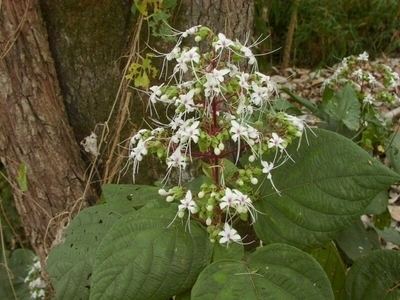
Clerodendrum infortunatum is a flowering shrub or small tree, and is so named because of its rather ugly leaf. The stem is eresct, 0.5–4 m high, with no branches and produce circular leaves with 6 inch diameter. Leaves are simple, opposite; both surfaces sparsely villous-pubescent, elliptic, broadly elliptic, ovate or elongate ovate, 3.5–20 cm wide, 6–25 cm long, dentate, inflorescence in terminal, peduncled, few-flowered cyme; flowers white with purplish pink or dull-purple throat, pubescent. Fruit berry, globose, turned bluish-black or black when ripe, enclosed in the red accrescent fruiting-calyx. The stem is hollow and the leaves are 6-8 inch (15–20 cm) long, borne in whorls of four on very short petioles. The inflorescence is huge, consisting of many tubular snow white flowers in a terminal cluster up to 2 ft (0.6 m) long. The tubes of the flowers are about 4 inch (10 cm) long and droop downward, and the expanded corollas are about 2 inch (5 cm) across. The fruits are attractive dark metallic blue drupes, about a half inch in diameter. Fruit usually with 4 dry nutlets and the seeds may be with or without endosperm. It flowers from April to August.
Chemical constituents
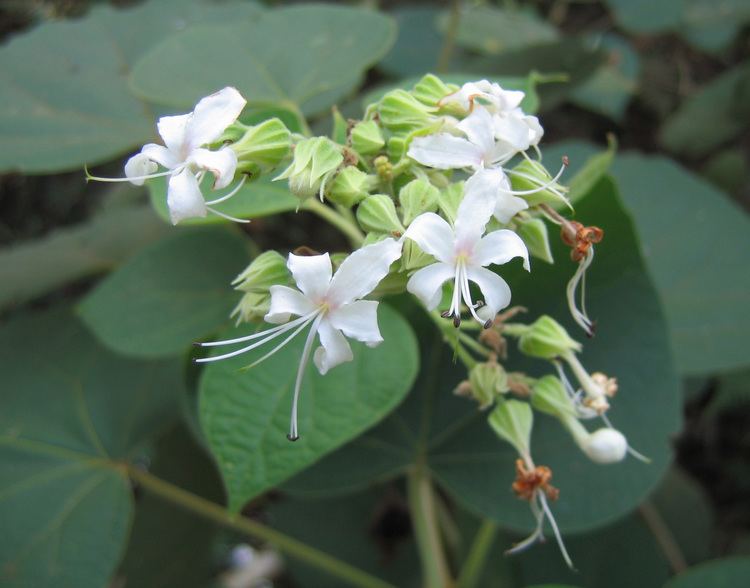
The major compounds are sterols, sugars, flavonoids and saponins. Novel crystalline compounds such as clerodolone, clerodone, clerodol and a sterol designated clerosterol have been isolated from the root. Seven sugars namely raffinose, lactose, maltose, sucrose, galactose, glucose and fructose were identified. Fumaric acid, caffeic acid esters, β-sitosterol and β-sitosterol glucoside were isolated from the flowers. Apigenin, acacetin and a new flavone glycoside, characterised as the methyl ester of acacetin-7-0-glucuronide are isolated from the flowers. Saponin is one of the major compounds of the leaf. 24 beta-ethylsterols, clerosterol and 22-dehydroclerosterol, 24-methyl-sterols (24-methylcholestanol, 24-methylcholesterol, 24-methyl-22-dehydrocholesterol, and 24-methyllathostero) and 24 beta-ethyl-22-dehydrocholestanol are found in the seeds. Scutellarin and hispidulin-7-O-glucuronide are present in the leaf. Poriferasterol and stigmasterol are the components of the aerial parts.
Ayurvedic and Siddha medicines
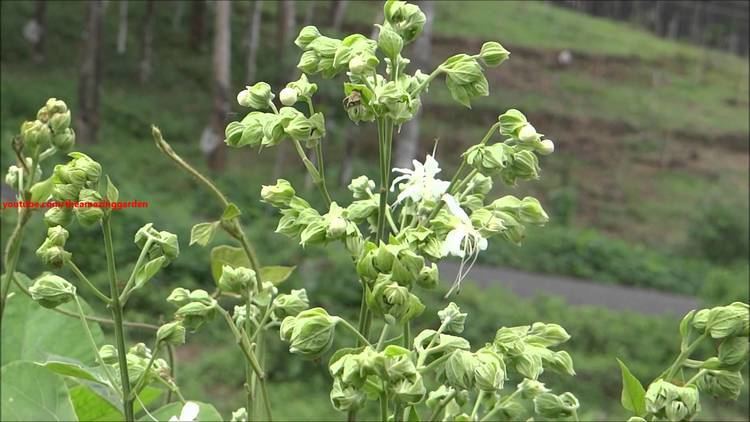
In Ayurvedic and Siddha traditional medicines, the leaves and roots of C. infortunatum are used as herbal remedy for alopecia, asthma, cough, diarrhoea, rheumatism, fever and skin diseases. It is also known to have hepato-protective and antimicrobial activities. The roots and bark of stem of this plant prepared as decoction and given in the dose of 60-80 ml twice daily for respiratory diseases, fever, periodic fever, cough, bronchial asthma, etc. The leaves are ground well and applied externally to induce ripenning of ulcers and swellings. A paste of leaves and roots are applied externally over skin diseases especially fungal infections and alopecia. Fresh leaves are given for diarrhoea, liver disorders and headache.
Traditional practices
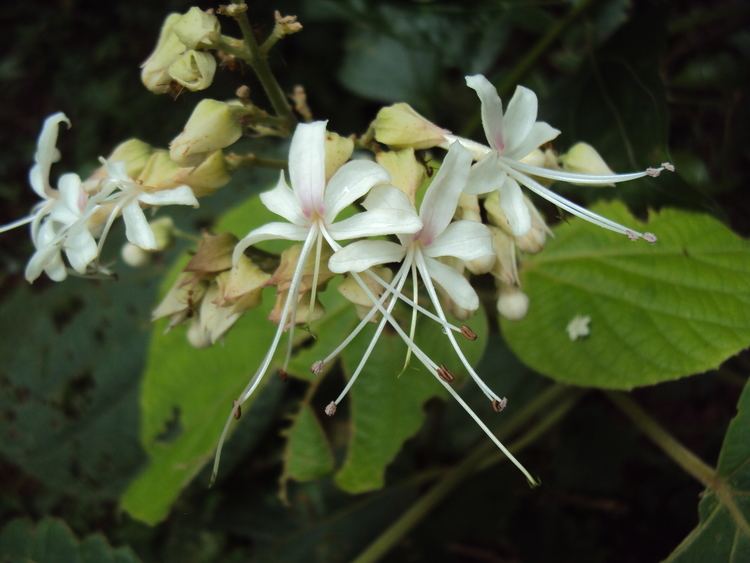
The leaf and root are widely used as antidandruff, antipyretic, ascaricide, laxative, vermifuge, and in treatments of convulsion, diabetes, gravel, malaria, scabies, skin diseases, sore, spasm, scorpion sting, snake bite and tumor. In Thai medicine the leaves and root are known to be diuretic; and used for treatment of intestinal infections and kidney dysfunction; when boiled or ground with water, it is taken to increase milk secretion for post-labor. In many traditional practices the leaves and root are widely used as antihyperglycemic.
